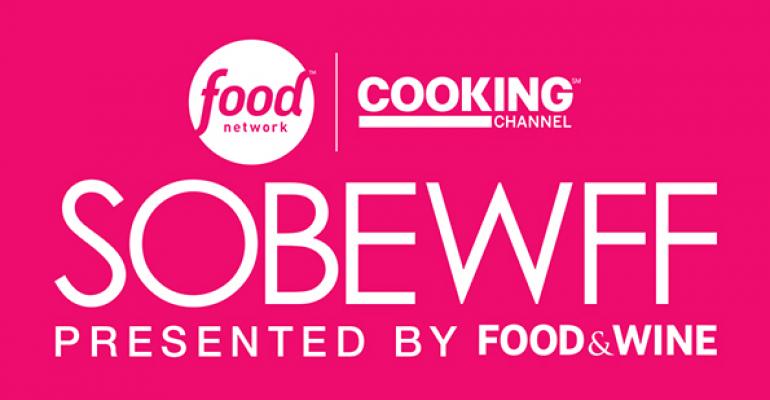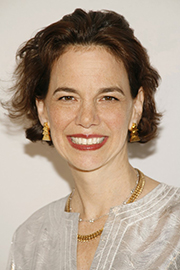
Dana Cowin, the editor-in-chief of Food & Wine, is a capable cook, but admits that she has messed up many a recipe. Her admission comes in her recent book, Mastering My Mistakes in the Kitchen. In South Beach during the wine and food fest she moderated a panel in which three top chefs recall the mistakes they made and how they learned from them and grew. Sitting on the panel were Chris Cosentino, the executive chef and co-owner of Cockscomb Restaurant and Boccalone Salumeria in San Francisco; Dominque Ansel, the chef/owner of Dominique Ansel Bakery in New York City; and Anne Burrell, the host of the Food Network’s Worst Cooks in America and the author of Own Your Kitchen.
Cowin: I want to talk about mistakes in the kitchen. I had a lifetime of failures cooking whether it was burnt food or over salting. The point of my book is that you learn a lot more in the kitchen than how to make a frittata. There are lessons we can take from the kitchen and apply to our lives. What is it about working in a kitchen that has informed your life?
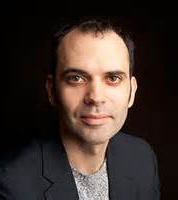
Ansel: When you’re young you don’t know much in life. You learn in the kitchen by being responsible, how to communicate with people, how to interact. All those skills you can use your whole life.
Cowin: Anne, you’ve seen so many horrible cooks [as host of the Worst Cooks in America]. What is the worst thing you’ve seen in a kitchen?
Burrell: My favorite story from this past season was about this delightfully sweet girl who made a baked potato by putting it in a Walmart grocery bag and cooking it in a microwave. She made a point of explaining that the letters on the bag had to be straight up. After that she made blackened eggs . . . blackened eggs! She took Creole seasoning and put an entire jar on two scrambled eggs, which ended up looking gray. She covered it all with parsley, stems and all, and called it plate décor. I told her the food was really bad and she said, “Even with the plate décor?”
I’m always about a low-tech solution. What we do is not rocket science, but we just don’t let people know that. My simple solution is to tell people that food is like a dog; it smells fear. So if you are nervous when you are cook, step down and relax, have a glass of wine, smile and start again.
What is the worst thing you’ve seen in a professional kitchen, Chris?
Cosentino: We have kids (young chefs) who come into the restaurant with knives that look like they dragged them on the ground. They might as well use the backside. Also, we see kids coming into the restaurant with great resumes and they have absolutely no skill. There has been a serious miss of the basics in this country. The test now is you ask them if they can julienne an onion, make me an omelet and cook a piece of fish properly? A majority of time, they overcook the fish.
Cowin: If they come from great kitchens, how does that happen?
Cosentino: I think the desire to learn has disappeared. What I’ve seen is more and more kids rely on Instagram and Twitter, which is a problem. They try to use it to look at pictures of artful plating and then try to recreate what they can’t understand from just looking at a photo.
Burrell: What people forget is that there is no shortcut for experience and doing it over and over again. You have to understand why you’re doing something and the science behind it. Many young chefs don’t take the time to do the research and put their heads down and shovel. It makes me crazy when people go to culinary school and say, “I’m a chef.” You’re not a chef and you have years to go before you’ll ever be one. People forget the years and years of hard work that go behind being a successful chef.
Ansel: Every chef makes mistakes, but you learn from it and grow. I remember being at one of the best pastry shop in Paris (Fauchon). There were 45 chefs and all of them had 10 to 15 year’s experience. They worked on this huge wedding cake for four days very late at night. What they realized too late is that the cake they put in the oven was too big to come out. I learned an important lesson: Make sure what you put in an oven can come out. It’s all about not doing a mistake again.
Cowin: I’m curious about your most poignant mistake, Dominique?
Ansel: I was working on a wedding cake for a lot of hours. I was making a chocolate mousse but it was too liquid and soft. It was a huge batch, about almost a hundred pounds. Mistakes are made in the kitchen all the time, but you have to work on. I left out an ingredient [that he eventually figured out].
Chefs share missteps
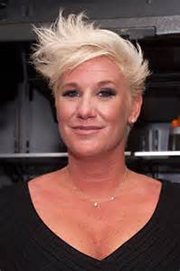
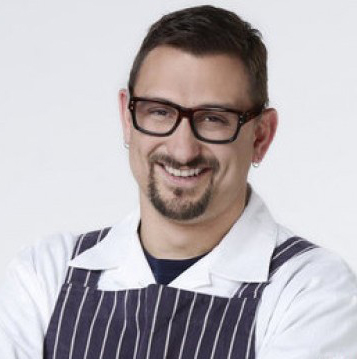
(Continued from page 1)
Speaking of leaving out ingredients, in my book I write about Joanne Chang (chef/owner of Flour Bakery & Café in Boston) who actually laminates recipes and requires her cooks to check off each ingredient with a Sharpie as they go along. Anne, do you have a story of a big mistake?
Burrell: I worked at Felidia with Lydia Bastianich. It was my first job and I was a sous chef at one of the best restaurants in New York. I was so proud. But the Italians have a saying that is heartbreaking: Buono ma, which means it’s good, but . . . Every time I would hear that from Lydia my heart would sink. For a while, every day I had to make this lobster sauce. And for some reason I just couldn’t get it right. One day it would be too lobstery and then it wouldn’t be lobstery enough. My fingers would be torn up from lobster shells. And then one day, finally, I got a che buono (delicious).
Cowin: Did you ever feel they were wrong about the lobster?
Burrell: Of course I did. I would think, this is totally fine, you people are crazy, I’m a badass girl chef. But then you finally get it and you admit you were wrong.
Cowin: How about you, Chris?
Cosentino: My first job out of culinary school was with Mark Miller, who has the most amazing palate. Every day as a prep chef at Red Sage we would be given a prep list that could be 40 items or longer. One day I had to do a lamb shank that was rubbed with a spice mixture that included habanero powder. I rubbed down 60 lamb shanks with the spice mixture, but I wet the bed on the habanero powder. I didn’t remember the amount on the list and used way too much. The whole dining room was filled with habanero smoke and I ruined 150 pounds of lamb. I’ve learned to write things down myself to remember.
Cowin: Now that you’re established, do you mentor younger chefs?
Yes. We all made mistakes. The measure of anyone’s success is how we deal with problems. You have to train young chefs to see the importance of simple things like a proper mis en place, to label your products and taste your products. I had a chef who mislabeled pork brine for vegetable stock. He was making risotto one night during service with the pork brine because he mislabeled the containers.
Cowin: Dominique, did you have a mentor who shaped your thinking?
Ansel: I think the kind of training I had in France was a lot different than what most people here have. One of my first jobs was working in a kitchen with many experienced chefs who didn’t take the time to explain to me how to be successful making a recipe. I had to figure things out on my own and show them I can do it. Now when I see kids in a kitchen, I take the time to explain what to do and what not to do. I want them to be successful and give them all my knowledge and experience. The stronger they are, the stronger I am.
Cowin: Anne, you’ve had very close ties with the Bastianich group and Mario (Batali).
Burrell: Yes. So much of what I learned was in their kitchens and outside of them. When the Food Network approached me to do a cooking show they gave me a contract and I was so confused and asked Mario if I should sign the contract and he said, as only Mario can, “Yes, unless you’re gong to work for the other Food Network.” It was stuff like that, life lessons and how to deal with certain things. They both came at the process in different ways, but they were both unwavering in their commitment to the Italian kitchen. I proudly wear the stamp from both of them.
Audience question: How do you determine whom to hire in your kitchens?
Cosentino: Everybody we hire in the restaurant goes through a screening process. They answer a questionnaire and they do a tryout. Most of the people we’re seeing are coming from culinary schools. They usually seek out where they want to work. So people are coming to me to learn about butchery or charcuterie. I’ve had people stay with me for a year, and some have been with me for 12 years. It’s all about what they want in life.
Restaurant Hospitality editor Mike Sanson reported live from the South Beach Wine & Food Festival in Miami Beach. The event, now in its 14th year, attracted more than 60,000 attendees, 150 celebrated chefs and 250 wineries and spirits producers. A component of the festival is trade panels designed specifically for restaurant operators. Sanson's reports from South Beach focus on those talks and interviews with top chefs attending the event.

